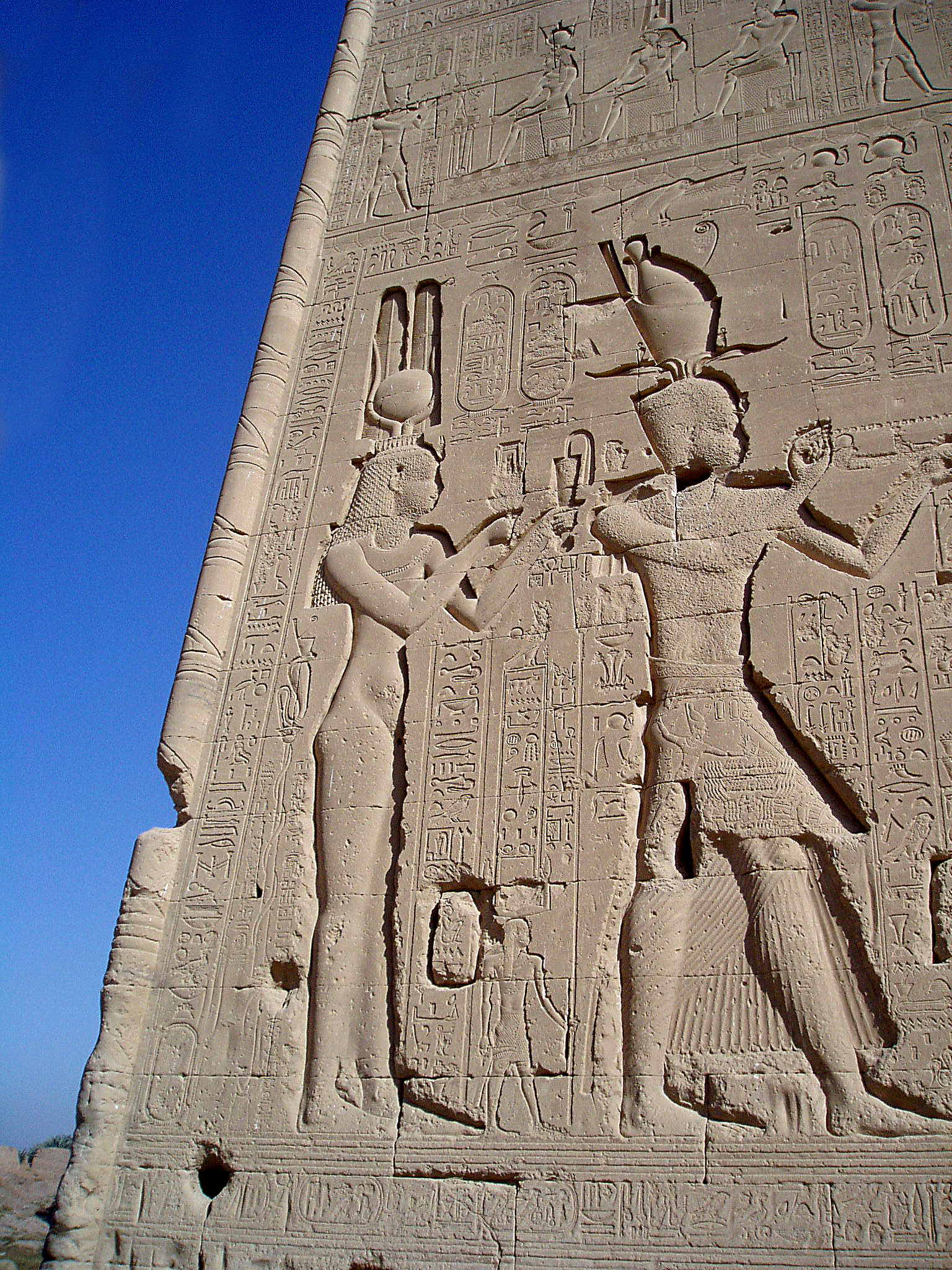Caesarion was the love child of Cleopatra and Julius Caesar. And because of his two extremely famous parents, he could have perhaps gone on to be the most influential person in the world – had he not been murdered.
In 47 BC, Cleopatra VII welcomed Julius Caesar to Alexandria. At that time, Egypt was still a semi-autonomous state. And, unlike the other Hellenistic kingdoms in the east, which had each fallen to the Roman Republic one by one, it managed to remain this way for several more years thanks to Cleopatra’s political savvy.
This high profile duo is said to have taken a sightseeing tour of the Nile. And on that tour, Julius Caesar supposedly fell for the charms of Cleopatra. The result was a child – one that Julius Caesar never directly acknowledged, but bore his name nonetheless.
Caesarion: What’s in a name?
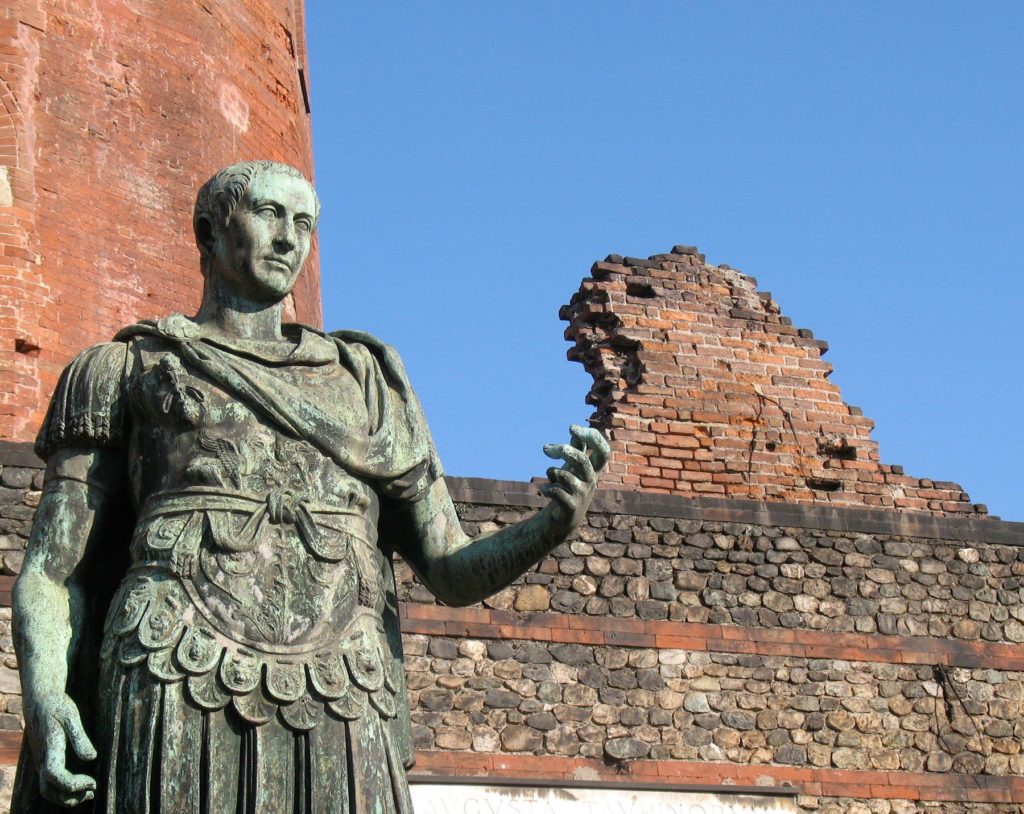
Caesarion was a very calculated name choice on the part of Cleopatra. It broke sharply with the traditional male names of the Ptolemaic dynasty of Egypt in exchange for something profoundly Roman. In this way, she acknowledged that the days of Greek hegemony in the eastern Mediterranean were over. And that positive interactions with the Roman Republic would be necessary to remain autonomous. So by tying herself so intimately to an important Roman statesman, she bought her kingdom that autonomy and prestige within the Roman power structure.
But this power structure would soon change in 44 BC, when Julius Caesar was assassinated. After that a new series of Roman political battles would arise. And the relevance of Caesarion’s connection to a Roman statesman, and by extension Cleopatra’s, would fade.
But while his father lived, Caesarion was raised very much in the typical style of a Ptolemaic royal. He lived at the court of Alexandria, except for two years that he and his mother spent as guests of Julius Caesar in Rome. Cleopatra had great hopes that Caesarion would become the ruler of the Roman Republic after his father.
Julius Caesar’s untimely death, however, spelled the beginning of the end for Cleopatra and Caesarion.
Caesarion and Cleopatra after the assassination of Julius Caesar
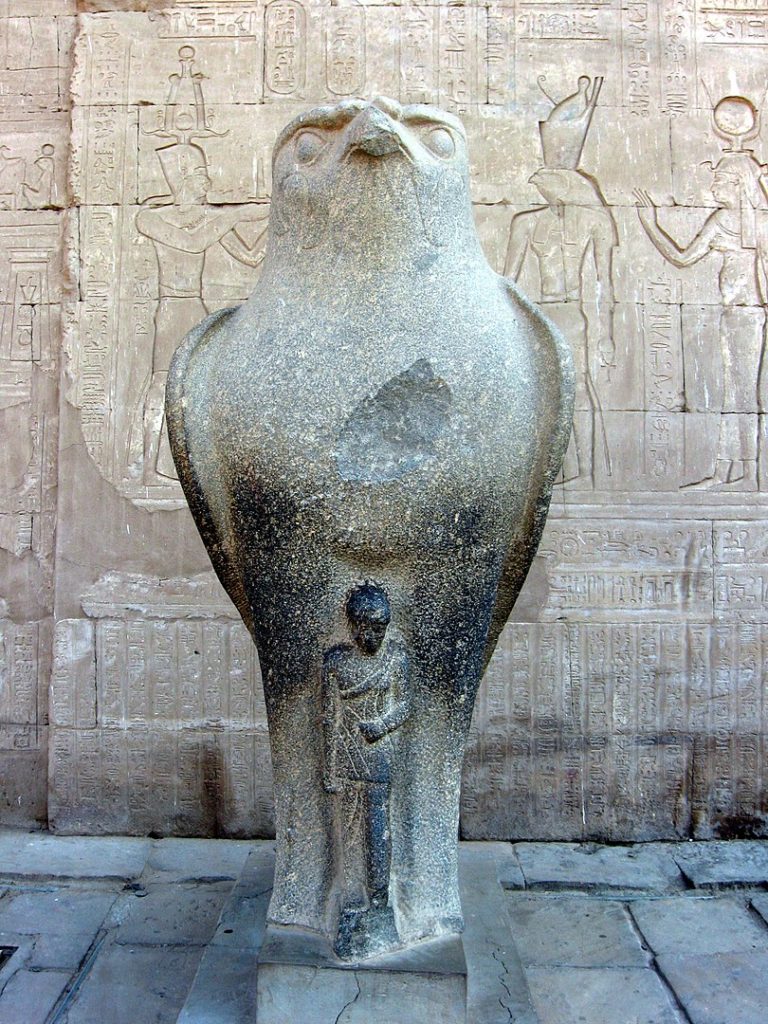
It was in the years after this that Cleopatra became embroiled in more Roman conflicts. But this time she tied herself to the loser of those conflicts rather than the victor.
Cleopatra became acquainted with a new Roman statesman in 41 BC, a certain Marcus Antonius (Marc Antony). They met in Rome when she was young, and became romantically engaged after an infamous rendez-vous on a boat in Tarsus. This bond was propitious for Cleopatra because Marc Antony was not only a statesman, but one of the three Triumvirs of the Roman Republic.
Cleopatra and Marc Antony would go on to have three children together: Twins, Cleopatra Selene and Alexander Helios, and Ptolemy XVI Philadelphus. The combination of these new siblings and his father’s death made Caesarion’s destiny less clear. But the Donations of Alexandria, although mostly meaningless pomp, cleared things up for a while.
Donations of Alexandria
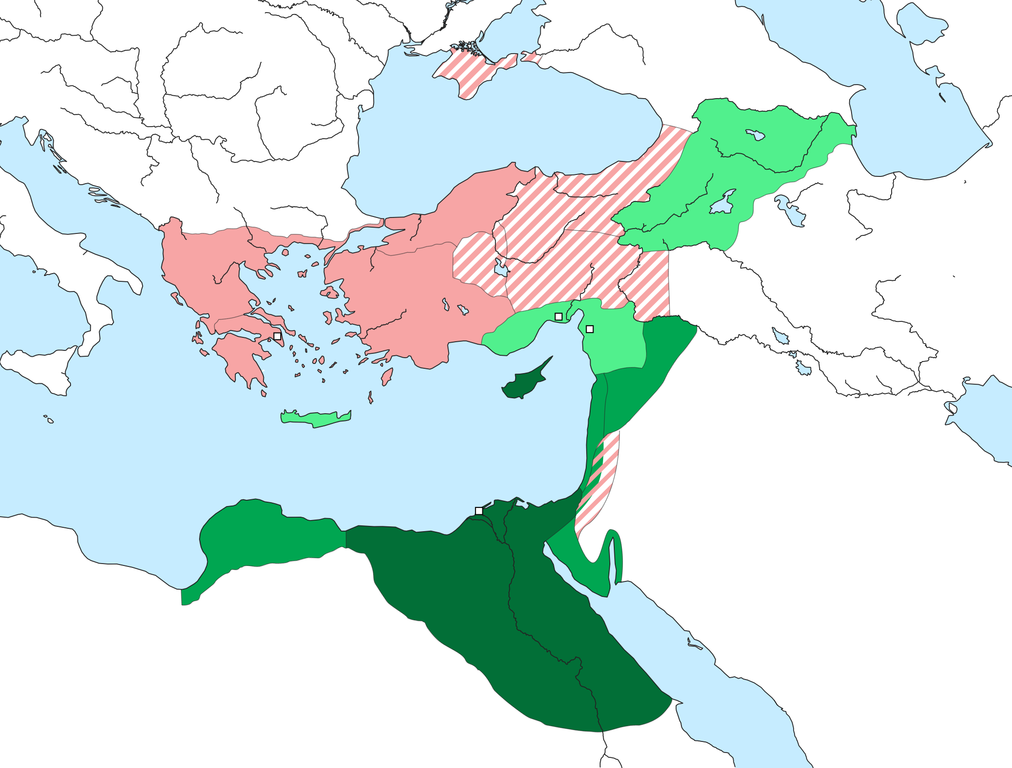
The Donations of Alexandria were a ceremonial event that took place in Ptolemaic Alexandria in 34 BC. It was at this event that Cleopatra and Marc Antony “donated” lands to Caesarion and their three children. The controversy about the Donations of Alexandria is that those lands were not theirs to donate. Egypt, being a client state of Rome, had no business gifting away its hard earned territories. And so this event was reasonably viewed by the Roman statesman Octavian, Julius Caesar’s adopted son who would go on to become Caesar Augustus, as an affront. He began to view the Ptolemaic Dynasty of Egypt as hostile.
The festivities took place at the Gymnasium of Alexandria. All of Cleopatra’s children, including Caesarion, were honored as they sat on golden thrones.

Caesarion was represented as the ancient Egyptian falcon god, Horus. He was given the title “King of Kings” and he was gifted all the traditional lands of Egypt to rule alongside his mother.
His siblings were given titles and made rulers of lands to the east and west of Egypt, like Syria, Armenia, and Cyrenaica.
Events like this one led to rising tensions with Rome. In the following year, they culminated at the Battle of Actium.
Murder of Caesarion: The End of the Pharaohs
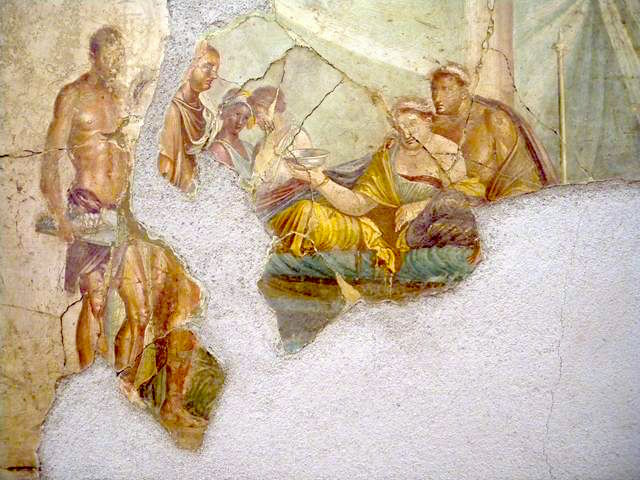
The Battle of Actium was the final showdown between a Hellenistic kingdom, namely the Ptolemaic dynasty, and Rome. It was also the capstone of decades of Roman civil wars and the unofficial beginning of the Roman Empire.
It was at this naval battle that the forces of Cleopatra and Marc Antony went head to head with Octavian.
The latter’s decisive victory spelled tragedy for Cleopatra and all of her kin.
Octavian became the self-proclaimed emperor of Rome, effectively dissolving the republic. And he went on the offensive, seeking to secure his power by wiping out what was left of the Ptolemies.
But after both Cleopatra and Marc Antony suicided, there was only one person who still threatened his power: Caesarion.
In theory, little Caesarion, the biological son of Julius Caesar, had a better claim to the throne than Octavian. And so Octavian was convinced by his advisors to find the boy and have him murdered.
There is some consensus among historians that Caesarion was in the process of fleeing Egypt when he was murdered. Some preparations had been made for him to reach India by way of a Red Sea port town in Egypt. Other historians say he had reached India, and then returned only to be murdered. In any case, Caesarion’s fate was sealed at the age of 17.
It is believed that he was strangled. But his exact cause of death is unknown.
The Legacy of Caesarion
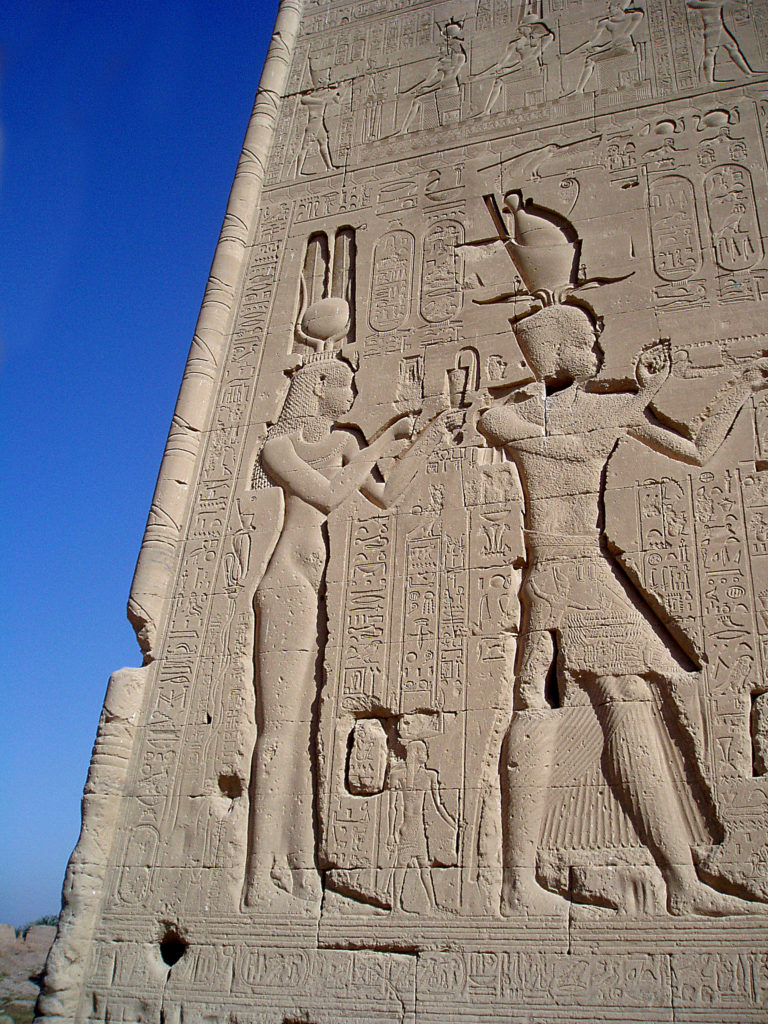
By the age of 17 he was a “King of Kings,” the ruler of Egypt, a god, and possible heir to the Roman Republic. There are few other characters in history who have been born into such high-profile circumstances or who had more potential for glory than Caesarion.
His fate is pathetic if you think about it. But it’s also relevant being that he’s the last of a long line of Ptolemaic kings and an even longer line of Egyptian pharaohs, practically going back to the beginning of recorded history.
